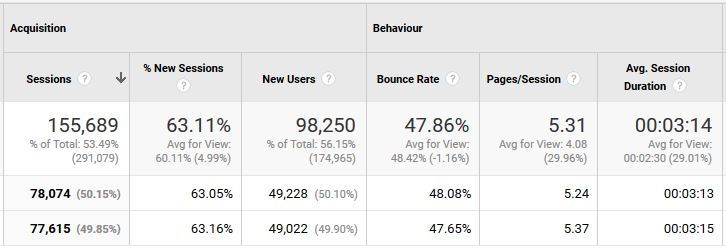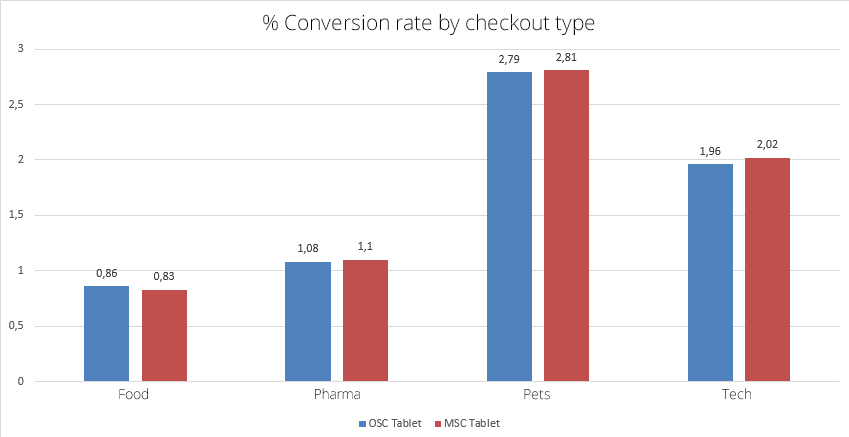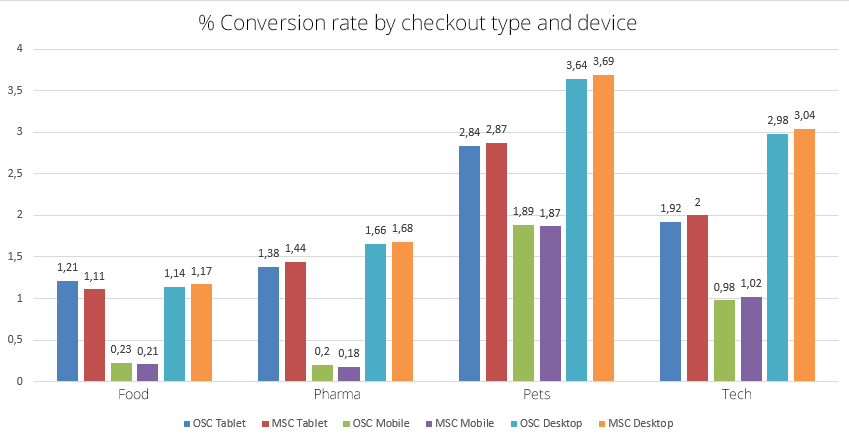For some time, there is a concurrent trend towards considering that the one-page online purchase processes (the so called single-page checkout or one-step-checkout) boost conversion rates compared to the traditional checkout processes (also called multi-page or multi-step checkout). But, is there any truth behind these statements? Is it just a trend or is it a reality?
In our opinion, and after participating, in the development of more than 300 eCommerce projects, we are quite reluctant towards the rationale behind these statements. Our theory is as it follows: “If a checkout process works correctly, it is usable and has been optimized, it will generate conversions no matter what kind of checkout process is”. It sounds logic, isn’t it?
Then, does a store with a One Step Checkout sell more or not?
After almost 2 years gathering information and processing A/B Tests data from different online stores belonging to different sectors, we can base our answer not only in the intuition that pure logic may dictate, but with hard data. And the answer is No. Having a checkout process in one or multiple steps does not directly affect an online store conversion ratio.
Of course, we all have seen specific cases where a change in the checkout process has brought improvements in the sales conversions of an eCommerce, but the question is: Has it been due only to the checkout process or have there been other improvements in the system that may have helped?
In one of our last experiences, where against the trend, we switched from a one-step checkout to a multi-step checkout, the result was a slight conversion improvement. If we only analyzed the superficial data, we could reach to the wrong conclusion. In this specific case, the conversion increase was due to other improvements involving different price rates and discounts as well as other usability and functional improvements.
Sometimes, this is where the main problem lies:
We have a tendency to unfairly compare processes in unequal conditions
- If we compare two “similar” online stores or belonging to the same sector, we are doing it in unequal conditions
- If we compare an online store that used to have a checkout process and has moved to another, we are also doing it in unequal condition
Why?
The answer is because we cannot compare different audiences, different time spans, different campaigns… If we compare them in unequal conditions, we will always find examples that may tilt the balance towards one side or another and that we may use this inequality to rise ourselves wrongly with the most absolute truth.
Let’s do the comparison in equal conditions: Numbers don’t lie
Let’s go back to logic and math. It’s where I feel more comfortable as I can lean on data, not only hypotheses. Here is where can see data in equal conditions as numbers don’t lie.
NOTE: This data sample has been taken from different online stores belonging to different sectors. This data has been taken from eCommerces with different traffic volumes and turnovers to endow with the most reliability and data breadth. However, in any case it represents an overall online conversion data representing all the online sectors. Even more than that: this is not the aim of this study.
Let’s do a simple exercise for those having curiosity and time: Make your online store do an A/B test of your visitors without doing any change for visitors from one group or another. This is to say, simply divide the users in two groups. 50% in one group using a multi-step checkout process, 50% in another with a one-page checkout process. After a few weeks we can access Analytics and take the data from this division. You will be surprised with the result.
In practice, we have split in two the store’s data. Here you can see the result of the exercise, with real data from an online store:
Mathematically, this is quite easy to explain: if your target audience has a statistical behavior in its totality, if you only study half of this very same audience, under the same conditions, the statistical result of their behavior must be by logic the same. Thus, it is expected that both groups have very similar results when it comes to session duration, bounce rate, etc…
The truth behind one page checkout: it does the same conversions
Up to this point, I want to sum up what this study wanted to prove: if we divide the same target audience in two halves in the same time span and we provide them with different checkout processes with the same user form fields and the same payment and shipping options the conversion rates of both groups are going to be very similar. This is to say, we will not be able to stand for a checkout system or another as there is none that leads to more and better conversion rates.
As said before, the data sample has analyzed data from eCommerces in different sectors from January 2016 to October 2017. All these eCommerces had a responsive web design and split their users in two groups in their checkout processes. The result is the average conversion rate of those eCommerces, divided by their sector.
Let’s move on to hard data:
As shown in the table (and putting aside the different conversion rates between eCommerce sectors, which I insist is not the focus of this study), the conversion rates are very similar within the same business sectors. One Step Checkout has a slight advantage in the food industry but it is the other way around in all other sectors. However, this difference is not noteworthy.
And, what happens if we divide this data by device?
(OSC = One Step Checkout, MSC = Multi Step Checkout)
As expected, dividing the results by device typology leads to similar results as well, which makes sense if we keep in mind the fore mentioned premise towards dividing statistical data under equal conditions.
Then, what checkout process must I use in my online store?
It’s clear that the checkout itself may have an influence in our users final decision when completing a purchase as long as this process has been optimized and set to work correctly.
Summing up, there are different factors that may have an impact on the user’s purchase decision. These are as it follows:
- A poor design
- Lack of usability
- Wrong shipping policies
- “Surprise” charges in the checkout process
- Having an insufficient catalogue
- Wrong pricing policies
It is also worth mentioning that, when talking strictly about conversions, in many cases we have the wrong traffic sources as they may bring a lot of visitors but they are not relevant at all and they may lead to nefarious conversion rates. It is also important to point out that, if we don’t optimize our store to improve its conversions on mobile devices, the usage statistics and conversion rates of which are clearly booming, it may prove very harmful to our business.
That being said, we must base our choice on our average customer profile, business sector, target market, etc. and focus more on a business strategy for our eCommerce rather than in our eCommerce’s checkout process.
In TLG Commerce we will help you find the best solution for your online store, always with the guarantee that, whatever checkout process you choose, this is going be optimized to deliver the best conversion rates.





